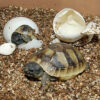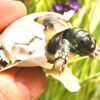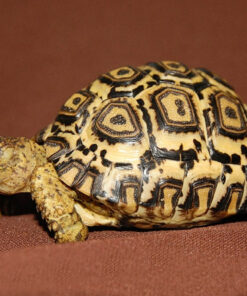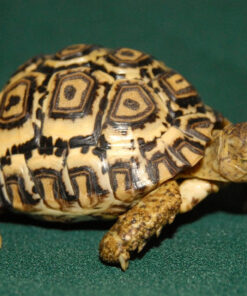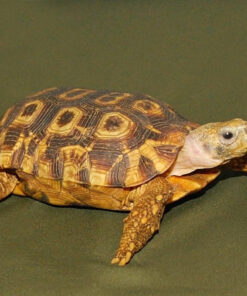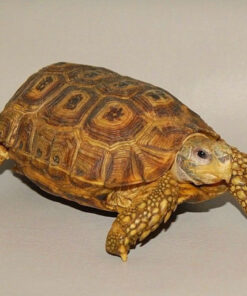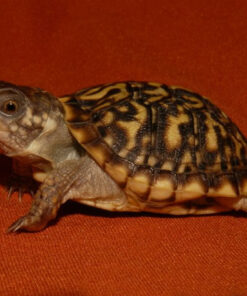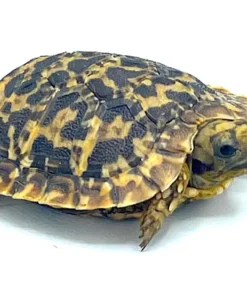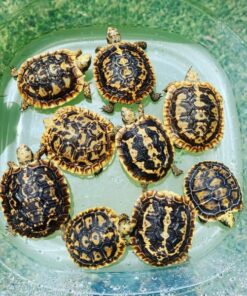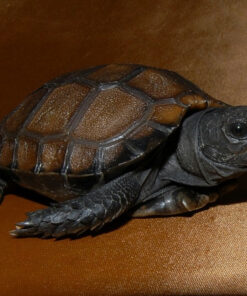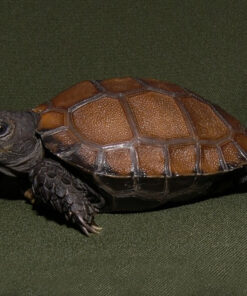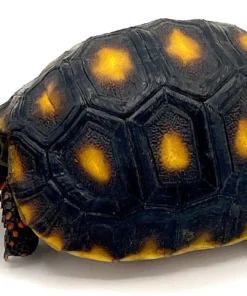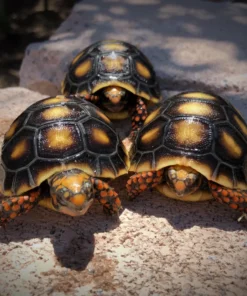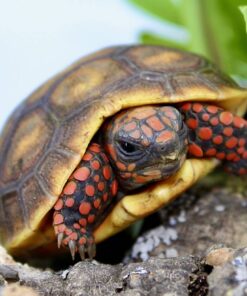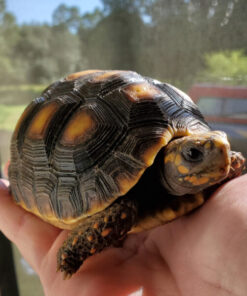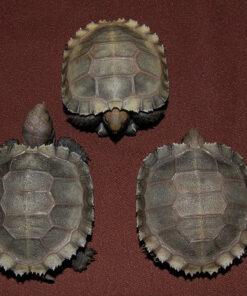$249.99
Thes Captive Bred Babies Are Approximately 2 Inches In Shell Length. These Stay Relatively Small, Excellent Species For An Indoor Enclosure. Fantastic Little Foragers Feeding On Mixed Veggies Regularly.
Hermann Tortoise For Sale: A Complete Guide for New Owners
Introduction to Hermann Tortoises
Hermann tortoise for sale, hermamm tortoises are one of the most beloved pet tortoises out there, thanks to their friendly nature, manageable size, and relatively easy care. Native to parts of Southern Europe, these tortoises have long been a favorite among reptile enthusiasts. If you’re thinking about bringing a Hermann tortoise into your home, it’s essential to understand their needs so you can provide them with the best care possible.
In this guide, we’ll walk you through everything you need to know, from their natural environment to diet, habitat, and health. Whether you’re looking to **buy a Hermann tortoise** or already have one, this guide is a great place to start.
Natural Habitat of Hermann Tortoises
Hermann tortoises come from Mediterranean regions like Italy, Spain, and the Balkans. They naturally thrive in warm, sunny areas with plenty of dry scrubland and grasslands to roam around. They’re used to foraging for various plants, flowers, and grasses, which plays a big part in their overall health.
Replicating these natural conditions in captivity is key to keeping your tortoise happy and healthy.
Buying a Hermann Tortoise
If you’re ready to **buy a Hermann tortoise**, make sure to do so from a reputable source. It’s always best to avoid buying from questionable sellers who may have wild-caught tortoises, which can be illegal and harmful to the species. Look for breeders or pet shops that specialize in tortoises and offer proper documentation on their origin and health.
When selecting your tortoise, check for signs of health: a smooth shell, clear eyes, and an active demeanor are all good signs. If you’re eyeing a **baby Hermann tortoise**, be prepared for some extra care, as they’re more delicate than adults but incredibly rewarding to raise.
Setting Up the Perfect Home for Your Hermann Tortoise
Creating the right habitat is one of the most important steps when welcoming a Hermann tortoise into your home. These tortoises are used to warm Mediterranean climates, so you’ll need to mimic those conditions.
Enclosure
For indoor tortoises, a tortoise table or a large terrarium is a good choice. An adult Hermann tortoise needs at least 3 to 4 square feet of space to move around comfortably. If you’re planning on keeping your tortoise outdoors, ensure the area is secure to prevent them from climbing or digging their way out.
Substrate
Use a substrate like a mix of topsoil and coconut coir that allows your tortoise to dig. Avoid anything too moist, as that can lead to health problems like respiratory infections.
Temperature and Lighting
Tortoises are cold-blooded, so they need external heat to regulate their body temperature. You’ll need to provide a basking spot with a temperature between 85°F and 95°F, with the rest of the enclosure cooler at around 70°F.
UVB lighting is essential for your tortoise’s health, especially for proper shell development. Make sure your tortoise gets about 10-12 hours of UVB light each day, either from a bulb or through natural sunlight.
What Should a Hermann Tortoise Eat?
A balanced **Hermann tortoise diet** is crucial for their well-being. These little guys are herbivores, meaning they feed mostly on plants. Replicating their natural diet as closely as possible is the best way to keep them healthy.
Greens and Vegetables
The bulk of their diet should consist of leafy greens. Some good options are:
– Dandelion greens
– Collard greens
– Mustard greens
– Endive
– Turnip greens
You can also mix in other veggies like squash or carrots occasionally, but they shouldn’t be a large part of their diet. Be careful with foods high in oxalates, like spinach, as they can interfere with calcium absorption.
Fruits
While your tortoise may love the occasional fruit treat, it’s best to offer these sparingly. Too much sugar can upset their digestion. If you want to give them a snack, go for small pieces of strawberries, apples, or melon once in a while.
Supplements
Calcium is a big part of keeping your tortoise’s shell strong. Dust their food with a calcium supplement a few times a week, and offer a cuttlebone in their enclosure so they can nibble on it whenever they need extra calcium.
Caring for a Baby Hermann Tortoise
Raising a **baby Hermann tortoise** can be a rewarding experience, but it requires extra care and attention. Since baby tortoises are more vulnerable, you’ll need to take extra steps to ensure they thrive.
Housing for Baby Hermann Tortoises
Baby tortoises don’t need as much space as adults, but they still need a comfortable enclosure with proper temperatures and UVB lighting. Keep a shallow dish of water available for soaking, as baby tortoises can dehydrate quickly.
Diet for Baby Hermann Tortoises
The **Hermann tortoise diet** for babies should be similar to adults but with smaller portions. Feed them soft, easy-to-digest leafy greens, and make sure they get plenty of calcium to support their growing shells.
Hydration and Soaking
To keep your baby tortoise hydrated, soak them in shallow, lukewarm water for about 10-15 minutes several times a week. This is especially important since baby tortoises can dehydrate more easily than adults.
Common Health Issues
Hermann tortoises are generally hardy animals, but like all pets, they can develop health issues if not cared for properly. Being aware of these problems early on can help you take better care of your tortoise.
Respiratory Infections
If your tortoise is kept in a cold or damp environment, they may develop a respiratory infection. Symptoms include wheezing, nasal discharge, and sluggishness. If you notice these signs, consult a reptile vet as soon as possible.
Shell Rot
Shell rot occurs when the tortoise’s shell becomes infected due to unsanitary conditions or excess moisture. You’ll notice soft, discolored patches on the shell if this happens. Keep your tortoise’s enclosure clean and dry to avoid this.
Parasites
Tortoises can carry internal parasites, particularly if they come from unclean environments or were wild-caught. Regular check-ups with a reptile vet and clean enclosures can help prevent and treat parasitic infections.
Pyramiding
Pyramiding is when the tortoise’s shell grows unevenly, creating pyramid-like bumps. This is usually caused by an improper diet, lack of UVB light, or insufficient calcium. By providing a balanced diet and ensuring proper lighting, you can help prevent this condition.
Lifespan and Growth
Hermann tortoises are long-lived animals. With good care, they can live anywhere from 50 to 70 years! These tortoises also grow slowly, taking several years to reach their adult size, which typically ranges from 6 to 8 inches.
This long lifespan is one of the reasons Hermann tortoises are such great pets—if well cared for, they can be companions for life.
Personality and Behavior
Hermann tortoises are calm and easy-going, making them wonderful pets for families. While they may not be as interactive as some other animals, they are curious creatures that love to explore their environment. Over time, they can even become quite attached to their owners!
These tortoises are most active during the day, especially in the morning and late afternoon. Watching them go about their day—whether it’s basking in the sun or burrowing in their enclosure—can be fascinating.
Final Thoughts
Hermann tortoises are one of the best choices for anyone looking to get a pet tortoise. They’re relatively easy to care for, live long lives, and have endearing personalities. Whether you’re looking to **buy a Hermann tortoise** or already own one, providing the right **Hermann tortoise diet** and habitat is key to keeping them healthy and happy.
If you’re considering getting a **baby Hermann tortoise**, remember that they require more attention early on, but the effort is worth it as they grow into beautiful, lifelong companions. With the right care and commitment, your Hermann tortoise will be part of your family for decades to come.
Related products
TORTOISE for sale
Baby Giant South African Leopard Tortoise – Exotic Pets for Sale
TORTOISE for sale
Northern Zombensis Hingeback Tortoise for Sale – Exotic Pet Option
TORTOISE for sale
TORTOISE for sale
Baby Pancake Tortoise for Sale – Exotic Pet with Unique Shell
TORTOISE for sale
TORTOISE for sale
TORTOISE for sale
burmese brown mountain tortoise for sale | #1 best price in USA







